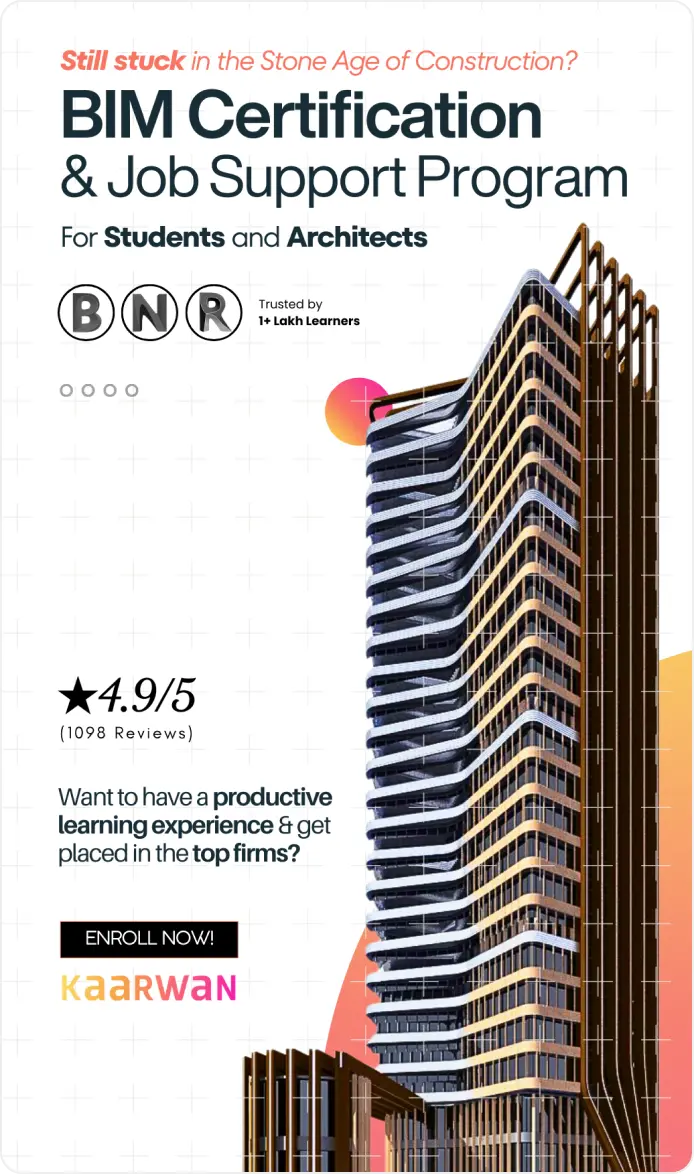Architectural Sketching and its Role in the Design Process
 Image by cookie_studio on Freepik
Image by cookie_studio on Freepik
Architects have relied on architectural sketching as a means of visualizing and communicating their ideas throughout history, from the earliest cave paintings to the present day of rapid technological advancement. Sketching has been used by architects for decades to construct buildings on paper before they are built on the ground.
Moreover, it plays a crucial role in the conceptual evolution process as well as refining the concepts to the most refined state! While sketching for concepts, architects have to consider several factors, and sketching helps to align all their thoughts. While sketching for concepts, architects have to consider several factors, and sketching helps to align all their thoughts.
Sketching is one of the cost-effective ways for architects to explore ideas and find solutions. It also allows architects to ‘manipulate’ the elements of the design quickly, to assess the impact of any changes.
In this process, architects can manipulate various elements such as the scale, proportions, materials, and spatial relationships of their designs. By sketching, architects can quickly experiment with different design options and evaluate their visual and functional impact, ultimately leading to the development of more refined and effective architectural solutions.
In this article, we will discuss architectural sketching, exploring its importance in the design process, its evolution, and how it continues to shape the field of architecture today.
Understanding The Process of Making Architectural Sketches
 Image by mindandi on Freepik
Image by mindandi on Freepik
Architectural sketching is the act of visually representing architectural ideas and concepts through drawings, typically done by hand using various tools such as pens, pencils, and markers. These sketches range from quick, rough sketches that capture initial ideas to more detailed and refined drawings that convey the final design.
During the initial years of architecture education, professors prefer students to sketch first before starting the conceptual design process, and most professionals begin with sketches as well.
In the conceptual design process, sketching plays a vital role in helping architects align their thoughts and refine their concepts to their most refined state. By sketching, architects can quickly experiment with different design options, manipulate elements such as scale and proportions, and assess the visual and functional impact of their ideas. Ultimately, sketching enables architects to develop more refined and effective architectural solutions.
Architectural Sketching Serves Several Major Purposes:
Idea Generation: Sketching is often the starting point for architects to brainstorm and explore different design possibilities. It allows them to quickly visualize and iterate on ideas.
Communication: Sketches are one of the primary and effective ways of communicating your concepts to clients, colleagues, and builders if it is in the ideation stage. They bridge the gap between the vision of an architect and others involved in the project.
Problem Solving: Sketching can help architects identify and address design challenges early in the process. It enables them to experiment with solutions and refine their designs accordingly.
Documentation: Sketches serve as valuable documentation of the design process, capturing the evolution of ideas, design decisions, and iterations made along the way. They provide a visual record that architects can refer back to, ensuring that the design stays on track and allowing for reflection and improvement in future work.
The Evolution of Architectural Drawings
Architectural drawings have a rich history that has evolved alongside advancements in technology and design tools. While hand-drawn sketches remain a valuable skill, architects now have access to a wide range of digital tools and software that complement traditional methods.
Throughout the years, architectural drawings have gone through distinct phases of evolution, reflecting the changing technological landscape and design practices. These phases can be categorized into traditional hand-drawn sketches, the introduction of computer-aided design (CAD), and the emergence of Building Information Modeling (BIM) software.
You can read more about architectural visualization in our blog - Top 10 Software that Architects Use
The evolution of architectural drawings can be traced through several key phases:
Prehistoric era: Prehistoric drawings have been found on cave walls, demonstrating the long history of architectural sketching. Ancient civilizations such as the Greeks, Romans, and Egyptians used sketches to capture their architectural designs and innovations.
 Two men under a tent, Prehistoric Indian cave painting, 7,000 years ago © The Architectural Review
Two men under a tent, Prehistoric Indian cave painting, 7,000 years ago © The Architectural Review
Sketches in the Modern Era: This is the traditional form of sketching that architects have used for centuries. It requires a high level of skill and is valued for its artistic and expressive qualities.
 Solomon R. Guggenheim Museum by Frank Lloyd Wright, 1959; image via Riley, T., Reed, P., Alofsin, A., Wright, F., & Museum of Modern Art. (1994)
Solomon R. Guggenheim Museum by Frank Lloyd Wright, 1959; image via Riley, T., Reed, P., Alofsin, A., Wright, F., & Museum of Modern Art. (1994)
CAD (Computer-Aided Design): The introduction of CAD software revolutionized architectural design. It allowed architects to create precise and detailed drawings with ease, enhancing efficiency and accuracy in the design process.
 © FreeCADfiles
© FreeCADfiles
3D Modeling: 3D modeling software enables architects to create three-dimensional representations of their designs. This technology has become indispensable for visualizing complex architectural projects.
 Sketchup 3D Model © EVERYPIXEL
Sketchup 3D Model © EVERYPIXEL
Digital Sketching Tools: With the advent of tablets and stylus pens, architects can now create digital sketches that mimic the feel of traditional drawing. This hybrid approach combines the benefits of both worlds.
AI-based visual creation: AI-based visual creation uses artificial intelligence to generate realistic visuals of a design from the text prompts. With this technology, architects can quickly and easily visualize their projects.
 © The Architect’s Newspaper
© The Architect’s Newspaper
Architectural Sketching in the Digital Age
In today's digital age, architectural sketching has not been replaced by technology but has rather adapted and integrated with it. Architects often use a combination of traditional and digital sketching methods to harness the strengths of both.
The advent of tablets and stylus pens has revolutionized digital sketching for architects. These tools allow architects to seamlessly transition between traditional and digital techniques, combining the tactile experience of drawing on paper with the convenience and versatility of digital platforms.
The advantages of incorporating digital tools into architectural sketching include:
Visualization: 3D modeling and rendering software enable architects to create realistic visualizations of their designs, helping clients better understand the final product.
Collaboration: Digital sketches can be easily shared and edited by multiple team members, promoting collaboration.
Precision: Digital tools allow architects to create highly precise drawings and easily make adjustments to designs.
Efficiency: Design iterations can be done quickly, saving in the overall project time timeline.
Key Takeaways
In conclusion, architectural sketching remains a fundamental and evolving aspect of the design process. Whether by hand or with technology, it is an effective means of generating ideas, communicating, solving problems, and documenting.
Architectural sketching is likely to continue to adapt and evolve as technology advances, enriching both construction and design in new ways. So, grab your sketchbook or digital stylus and start sketching your architectural dreams into reality!
If you're an aspiring architect or designer looking to enhance your sketching abilities and prepare for the real world, consider enrolling in Kaarwan workshops.
For architects and designers around the world, we offer affordable and practical workshops with a focus on skill-based learning.





